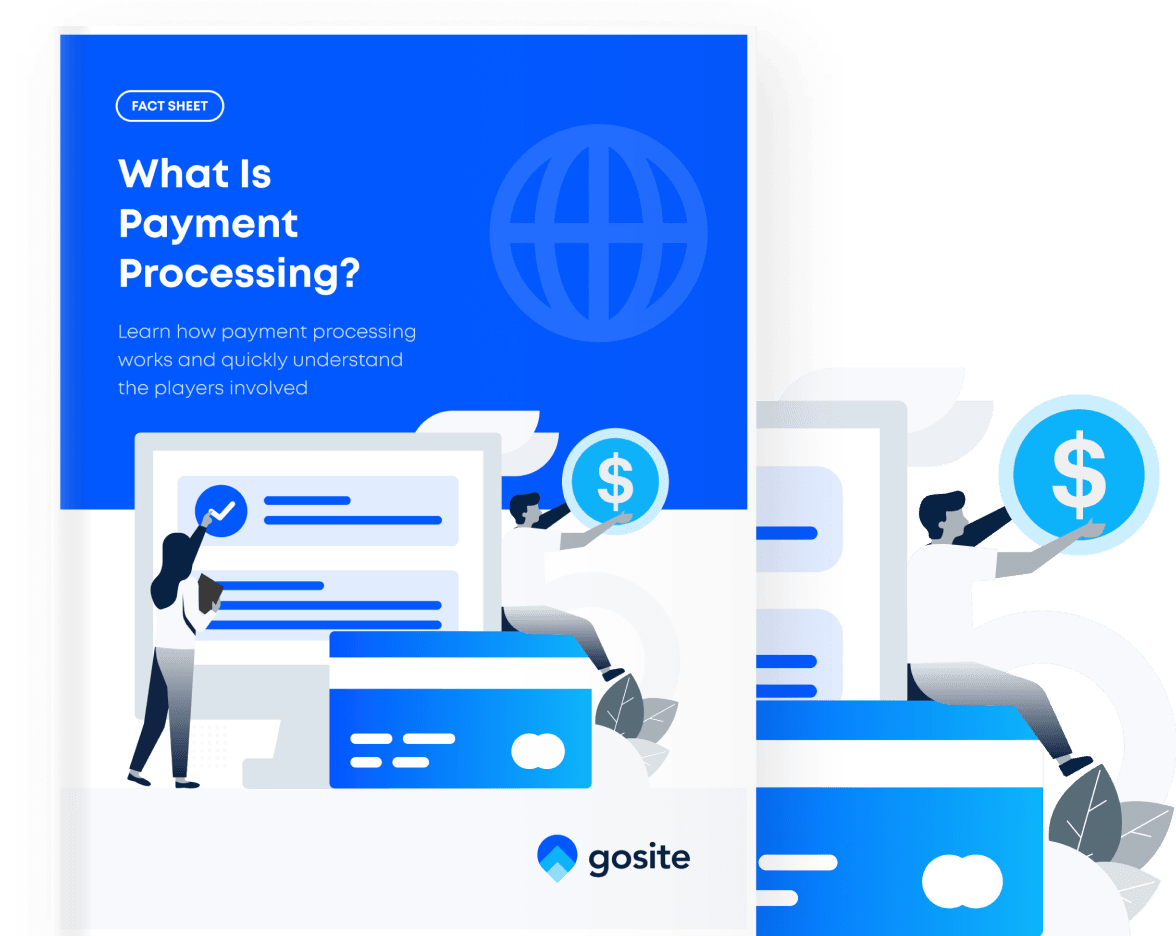%20(1).png)
#1 Online Platform
for Your Business
Powerful all-in-one platform designed to bring your business online today.
%20(1).png)
Powerful all-in-one platform designed to bring your business online today.
Download our easy-to-read fact sheet to discover why payment processing is a critical part of the customer experience — and how it impacts your bottom line.

Payment processing refers to how transactions occur between a business and a customer. Payment processing automates the collection of debit and credit card information to ensure transactions are valid. Essentially, it mediates the exchange between a business and the financial institution of the customer.
Payment processing should be a painless solution for businesses and customers alike. With payment processing, businesses automate the logistics of taking card information. This creates simpler checkouts and minimizes errors. Payment processing also creates convenience for customers who expect a seamless purchasing experience.
In other words, having a cash register isn’t enough anymore. To meet customers where they are, certain software is necessary: businesses need a payment processing solution that allows customers to pay online, on mobile, or through text.
Below, we dive into (almost) everything you need to know about payment processing.

A cash transaction is straightforward: the customer hands dollars over to the business in exchange for a product or service. Payment processing is more complex. It takes longer for the business to receive the actual payment, and multiple parties are involved. The entities involved in payment processing include:
Paying with a credit card is a slightly longer process than paying with cash (and certainly more complex), but the authorization stage still happens in a matter of seconds:
You’ll need to choose the right payment processing partner for your business. Payment processing should be easy and seamless, for both the business and customer.
Today’s payment processing solutions offer many capabilities, so it’s important to weigh your options. You may want to consider a platform that seamlessly integrates with your existing software. You may want a modern, all-in-one payments platform that keeps payment processing simple and streamlined.
Ultimately, it’s up to you to choose the provider that aligns with your current objectives and future vision. Here are a few points to consider when looking for the right payment processing solution:
When is the last time you saw someone pay for their groceries with a check? Or even cash? It’s not very common. Instead, cards are the single most popular method of payment. In fact, a significant amount of shopping is now done online. More than half of credit card holders use their cards for everyday purchases. And with the advent of mobile pay, we may be moving toward a cashless society.
That means that even within the brick-and-mortar world, a point-of-sales system is no longer enough. A virtual payment gateway is necessary for a storefront because it allows users to pay in the way convenient to them—whether online, on a mobile app, or through text messaging. Choosing an omni-channel payment processing solution helps you streamline transactions while meeting customers on their terms.
All payment processing solutions involve processing fees. This is the fee that a business is charged for each use of the payment processor. It’s not uncommon for a business to be quoted a misleading processing rate when they sign up for an account with a new payment processing solution. Some quoted rates take into account a blend of wholesale cost and the processor’s markup. Other quoted rates only account for a processor’s markup over the wholesale cost of a purchase. There may also be fees for terminals or POS devices, early termination charges, fees for exceeding max monthly quotas, or fees for missing minimum quotas. Additional charges aren’t always bad, it’s just important to be aware of them before signing the dotted line. Look for a payment processing solution with transparent prices so there aren’t any surprises on your first bill.
Handling customer payment information is not a task to be handled lightly. It’s critical that your payment processing solution is secure. That means selecting a provider that is 100% secure and Payment Card Industry (PCI) compliant. PCI compliance refers to standards that ensure all transactions are handled securely and uniformly. A business that’s serious about protecting payment details shouldn’t settle for anything less than a PCI-compliant provider that offers the highest grade encryption and payment technology available.